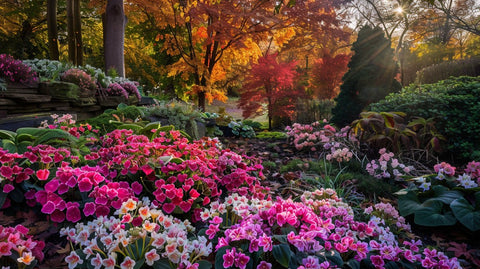Discover how to plant and care for elm trees to enjoy their stunning golden fall colors.
Introduction
The beauty of fall foliage is one of nature's greatest spectacles. Elm trees, with their graceful forms and vibrant autumn colors, can make any landscape breathtaking. This guide will help you plant and care for elm trees, ensuring you enjoy their golden hues every fall season.

Understanding the Elm Tree
1.1 Types of Elm Trees
- American Elm: Known for its vase-like shape and stunning golden-yellow fall foliage.
- Chinese Elm: Features small, serrated leaves that turn a rich golden-orange in autumn.
- Siberian Elm: A hardy species with yellow to brown fall colors, ideal for colder climates.
1.2 Benefits of Planting Elm Trees
- Environmental Benefits: Elm trees improve air quality and provide habitats for wildlife.
- Aesthetic Appeal: Their majestic forms and fall colors enhance any landscape design.
Ideal Conditions for Planting Elm Trees
2.1 Soil Requirements
Elm trees thrive in well-drained, loamy soils. They prefer slightly acidic to neutral pH levels, but can adapt to various soil types.

2.2 Sunlight and Space Requirements
Elm trees grow best in full sun but can tolerate partial shade. Ensure adequate space for their mature size, which can vary by species.
2.3 Climate Considerations
Different elm species are suited to various hardiness zones. American Elm thrives in zones 3-9, while Chinese Elm is better for zones 5-9.
Step-by-Step Guide to Planting Elm Trees
3.1 When to Plant
Spring and fall are the best seasons to plant elm trees. Planting in spring allows roots to establish before the heat of summer, while fall planting supports root growth before winter dormancy.
3.2 Preparing the Planting Site
Choose a sunny location with well-draining soil. Gather tools such as a shovel, compost, mulch, and a watering can.
3.3 Planting Process
- Dig a hole twice as wide as the root ball and just as deep.
- Place the tree in the hole, ensuring the root ball is level with the ground.
- Backfill with soil, water thoroughly, and apply a layer of mulch around the base.
- Support young saplings with stakes if necessary.
Caring for Elm Trees
4.1 Watering and Fertilization
Water newly planted elm trees regularly during the first 2-3 years. Use a balanced fertilizer, applying it in early spring to support growth.
4.2 Pruning and Maintenance
Prune elm trees in late winter or early spring to remove dead or diseased branches. Regular maintenance ensures healthy growth and vibrant foliage.
4.3 Pest and Disease Management
Common pests like elm leaf beetles and aphids can be controlled with insecticidal soap. Monitor for diseases like Dutch Elm Disease, and prune infected areas promptly.
Enjoying the Fall Foliage
5.1 Timing and Viewing Tips
Expect peak fall colors from late September to early November. Capture the beauty of your elm trees in the early morning light for the best photo opportunities.

5.2 Using Elm Foliage in Seasonal Decor
Gather fallen elm leaves to create autumn-themed wreaths or use them in seasonal crafts to bring the outdoors inside.































Comments (0)
There are no comments for this article. Be the first one to leave a message!